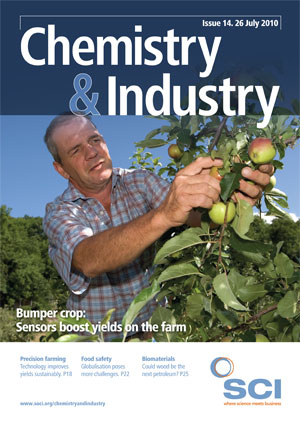Deep cuts to science are a certainty, the new UK science minister has warned. David Willetts, Minister of State for Universities and Science, laid out his ideas for research in his first keynote lecture on science spending since the coalition government was elected. However, details of where savings will be made and their severity will have to wait until after the comprehensive spending review in the autumn.
Willetts chose the Royal Institution in London to talk about making the best use of government money, saying that he wanted to see more publicly funded, shared research facilities and better public procurement. He also plans to explore public competitions, funded by government or industry, as a driver for innovation. He also tried to reassure the scientific community that he believes in science and its economic value, while simultaneously justifying the impending cuts.
Willetts wants to expand support for ‘research platforms’ – government funded facilities, shared by industry and universities, that neither could afford on their own. Stan Higgins, ceo of the UK North East Process Industry Cluster (NEPIC), supports the idea of these platforms and would like to see them focus ‘on the needs of industry sectors’.
These platforms can also be used as a focal point for science parks, bringing specialist companies and institutes together geographically. Higgins says governments should have an effective policy to promote them. ‘Clusters can give industrialists a business advantage through a collaborative approach in many areas, such as shared infrastructure, skills development, logistics and innovation platforms.’
Unsurprisingly, the new science minister is critical of the previous government’s policies on innovation, describing their thinking as akin to a ‘sausage factory’ where cash injection to university-based research leads directly to wealth generation. Ben Martin, a professor of science and technology policy studies at the University of Sussex, is encouraged by this. ‘[Willetts] recognises that there is more to the interaction of the science base and innovation than just encouraging patenting and spin-offs by university scientists.’
Despite the second half of Willetts’ talk being an ‘economic case for investment in science and research’, he assured the audience that cuts were coming. And although the US, Canada and France increased spending on science during the recession, the UK will not be doing the same. Willetts justified this by the size of the UK’s deficit, which Martin describes as ‘one of the most feeble bits of [Willetts’] argument’.
‘He should be looking more closely at the US rescue package and the very substantial component in there for technologies and innovations aimed at sustainability, energy and the environment… We are missing a major trick here,’ says Martin. Higher education has already been told to make £600m in efficiency savings (C&I 2010, 10, 5).
Higgins is also keen to stress the cost of innovation. ‘Studies have shown that, for every euro spent on research, it takes between €60 and €100 to innovate the research outcomes to real products and new business,’ he says. ‘The funding of research on its own is not enough.’
There is also uncertainty about how such deep cuts will affect industry. Higgins says that what he would like to see is more industry involvement in public spending decisions on R&D to help bring better returns on public investment.





